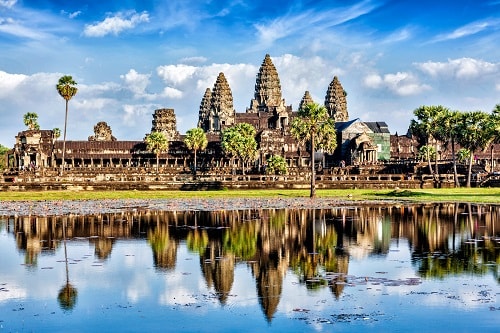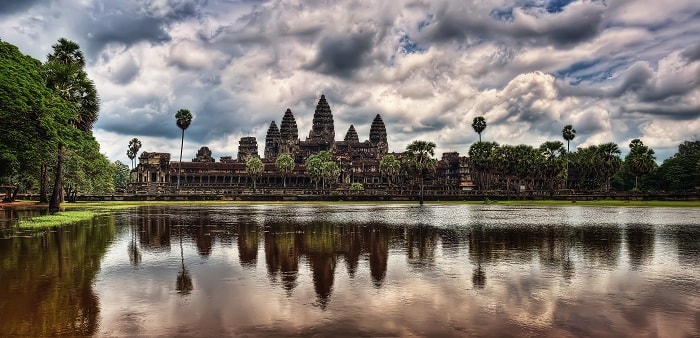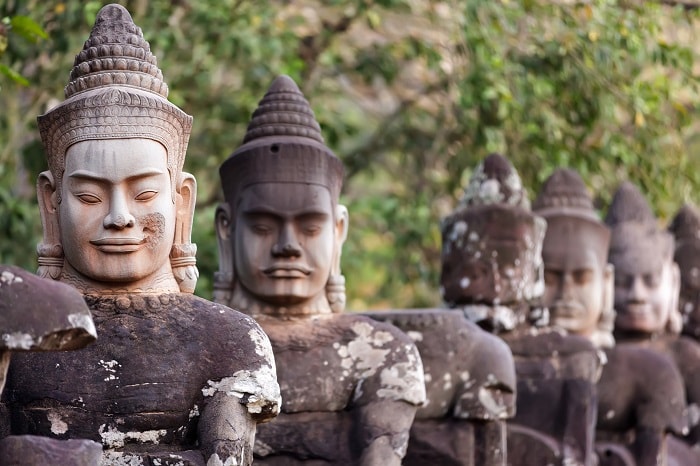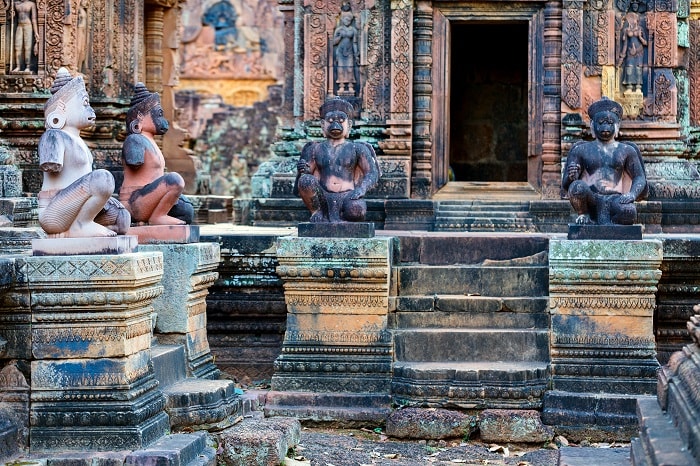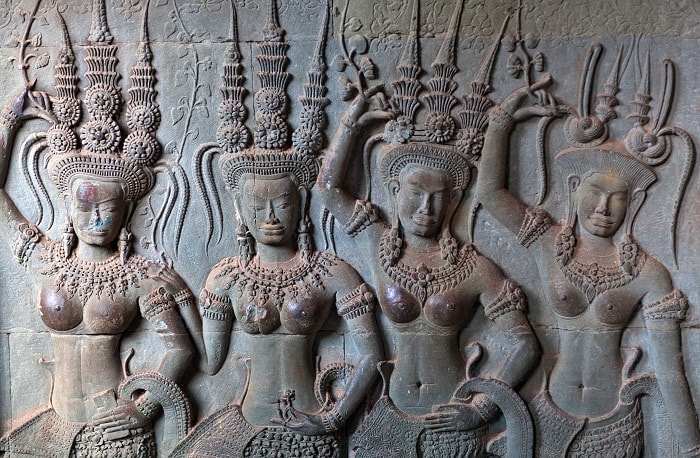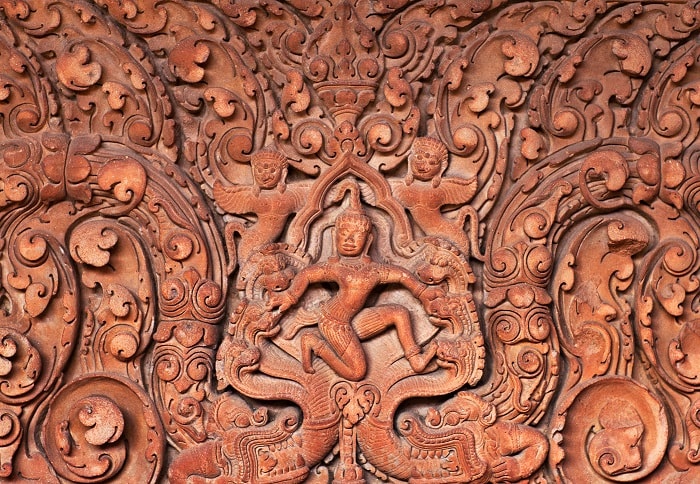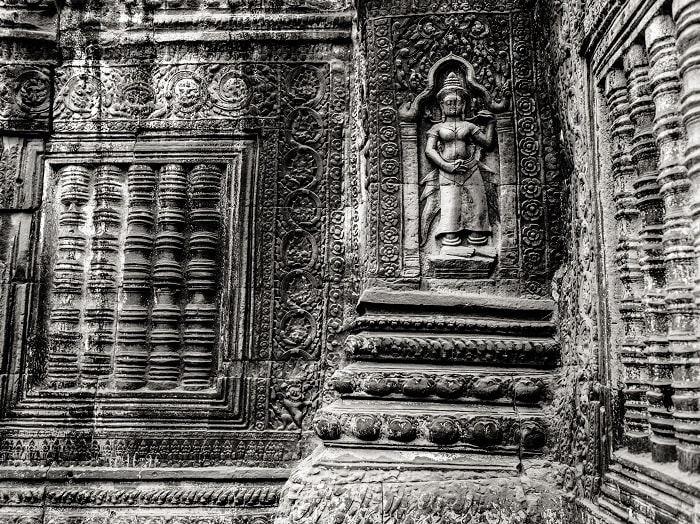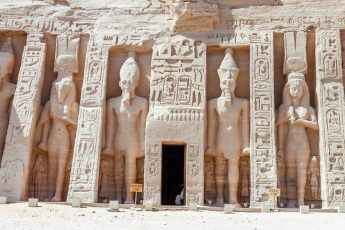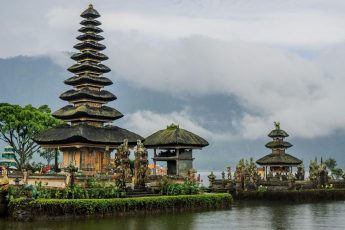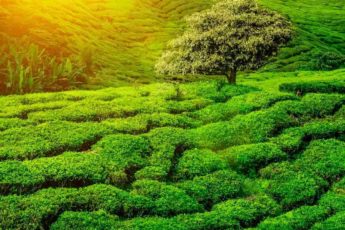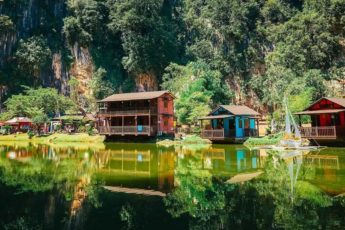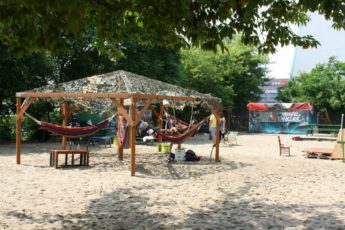Angkor Wat may not be an official wonder of the world, but it is in my book. With its towering pillars and intricate artwork carved in the stone, it’s a must see for anyone traveling Southeast Asia. Originally built by the Khmer Empire in the early 12th century to honor the Hindu god Vishnu, it gradually transformed into a Buddhist temple over time. With the outer wall surrounding an area of 203 acres, it was a massive undertaking. I’ll be honest though, I didn’t do much research before going. I heard about it from fellow travelers in a Bangkok hotel bar and had to see it for myself. Two days later I left the bustling city of Bangkok, and hopped on a flight to Siem Reap, Cambodia.
When to visit
To get the perfect shot of the entire temple complex, the best time to go is at early dawn. The sunrise pictures are nearly guaranteed to be perfect. Unfortunately, this is not a best kept secret. Though it’s still easy to get a good sunrise picture void of other people, crowds with their endless selfie sticks tend to take away from the experience. There is a silver lining though!
There are a couple things you can do to avoid the crowds.
-
Just after the sunrise.
After everyone gets in their perfect sunrise shot, you will notice most of them disperse back to their hotels until later in the day. This is your window to enter the temple complex. It wont be without other people, but you will have opportunities to snap shots without the crowds.
-
During the wet season.
When I want to see a popular attraction in SE Asia, I tend to go during the wet season. The wet (rainy) season is between May to early October. As with most tropical climates, there is a dry and wet season. Fortunately, that also coincides with less tourists. This is also risky if you only plan on visiting for a couple days as it may rain most of the time. I have found rain tends to last 20 minutes or so with breaks of sun in between. However, I have also seen it rain in Laos and Thailand for 2 days straight. Regardless, the sunsets always seem to look more glorious during the rainy season.
Entering Cambodia
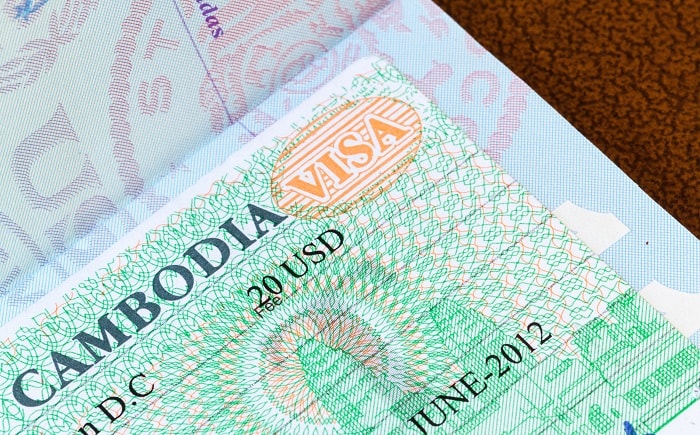
- Cambodia offers a 30 day visa on arrival for most countries. Be sure to meet the following requirements when entering Cambodia
- Passport sized photo (I usually carry a few of these while traveling)
- At least 6 months validity on your passport.
- An entire visa passport page void of any stamps (the visa will take up an entire page)
Tip: Don’t buy any alcohol or cigarettes in duty free shops. International brands are available at many shops for much cheaper.
Where is this temple complex you speak of?
The temple is located in the middle Angkor Archaeological Park, and it’s about 20-30 minute drive from Siem Reap, or an hour and a half walk if you you feel adventurous. I always opt for the less safe motorcycle taxi when it’s not raining.
Where to eat
There are plenty of local eateries just away from the entrance to Angkor Wat.
Respect
Please show respect while visiting Angkor. It may be a popular tourist attraction, but it’s also a holy place of worship pilgrimage for many.
Wildlife

You are guaranteed to see flourishing wildlife everywhere. Namely all the monkeys (macaques). Don’t let their cuteness fool you. These little bastards run Angkor like the mafia. If you have any food on you, they are likely to follow in hopes of stealing it. I had my own experience at the Big Buddha in Phuket when a band of monkeys distracted me while another took the can of Pringles from my hand and ran up a tree. Also, rabies is a thing in Cambodia. Admire them, but it’s best to steer clear of them when you can. The last thing you want on your magical trip are a series of rabies shots.
Advice
- Most of the early-bird crowds take their sunrise photos of Angkor from the main lake. There is another lake on the right which is much less crowded and still just as awe-inspiring.
- Get a private guide. There are many large tours available on the cheap, but I have found large tour groups to take away from my experience. A private guide may be a bit pricier, but will allow for a more intimate experience of the entire complex.
- Cambodia accepts the US dollar as well as the local currency riel. Exchange rates vary daily, but there’s an app for that!
- If money is no object, there are private helicopter tours of Angkor allowing for amazing aerial photos while severely pissing off the crowd below.
It’s hard to imagine a construction project this massive being accomplished in the 12th century. What struck me personally was the careful attention to every detail. If you are in SE Asia and have a few days to spare, I recommend you venture towards Angkor. The sooner the better. In the early 90s, only a few thousand tourists would come yearly. That number has grown to over 2 million and showing no signs of letting up. Nevertheless, it’s a magical place offering a unique doorway into the past. Happy Travels!

